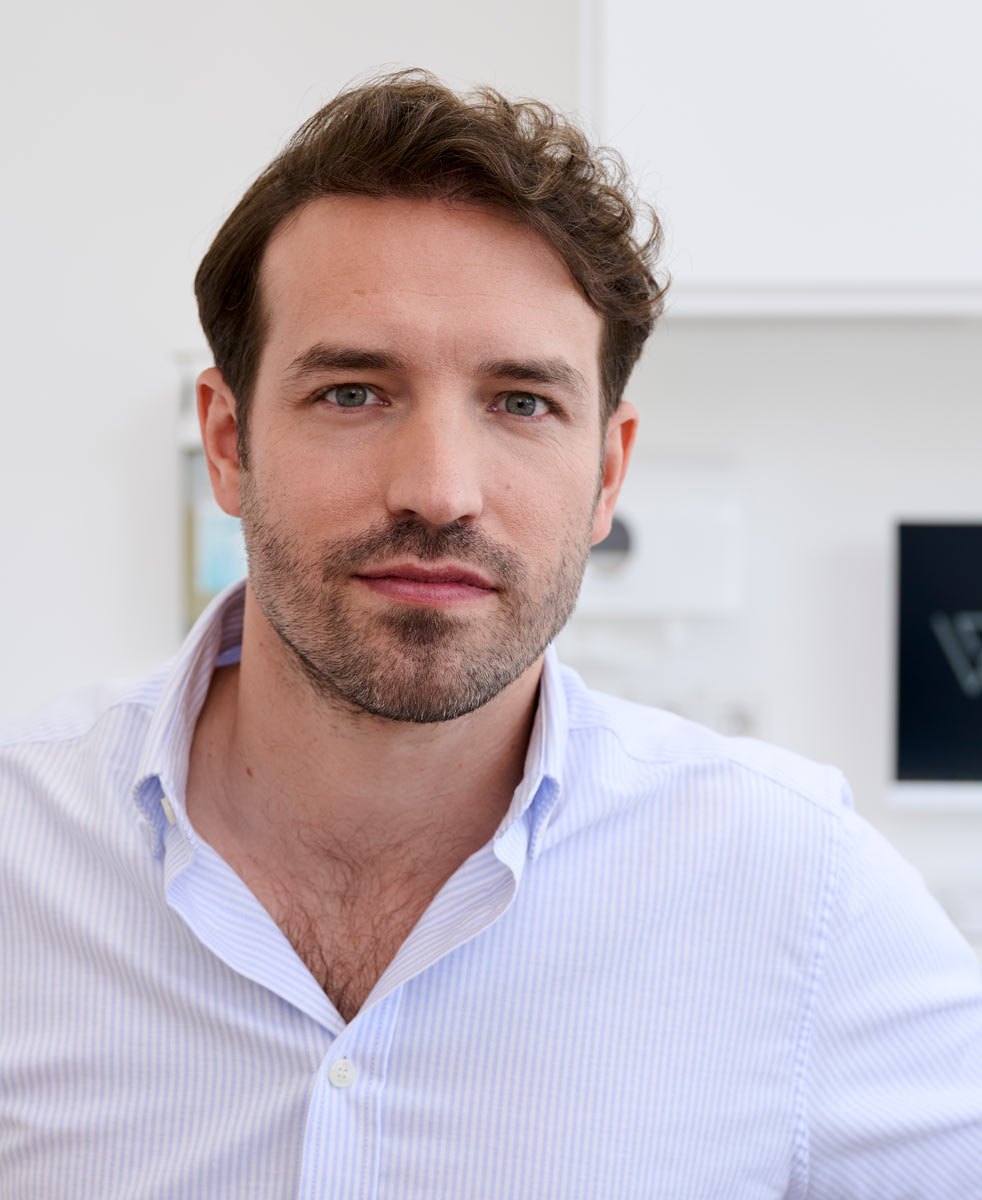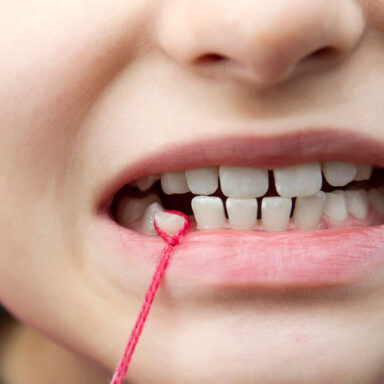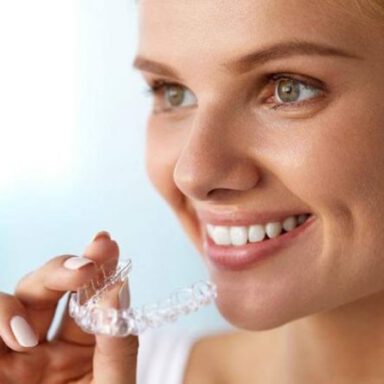Guidebook
Permanent cure for sleep apnea through jaw advancement with rotation

The internationally recognized and only causal therapy for obstructive sleep apnoea (OSA) is the forward displacement of both jaws. According to the guideline “Non-restorative sleep/sleep disorders – Chapter: Sleep-related breathing disorders”, this surgical therapy is the only way to eliminate the causes of OSA and thus achieve a permanent cure. The osteotomies for advancement of the upper and lower jaw enlarge the pharyngeal airway and simultaneously increase the pharyngeal muscle tone. As a result, both effects reduce the collapsibility of the mouth and throat and the number of sleep-related breathing disorders (apneas and hypopneas) is reduced to a non-critical level in the vast majority of cases.

Author
Dr. Fabian von Rom
Date
Estimated reading time
approx. 7 min
Sleep apnoea
Contents
Who is eligible for causal therapy for obstructive sleep apnoea?
The surgical procedure, which is also known as maxillo-mandibular advancement (MMA), is particularly suitable for patients with moderate to severe obstructive or mixed sleep apnoea. The method is a highly effective treatment for OSA, particularly in cases of congenital malformations (e.g. Pierre Robin syndrome, Crouzon syndrome) or anatomical features of the upper airway such as microgenia (lower jaw too small) or mandibular retrognathia (lower jaw set back in relation to the anterior skull base). Nevertheless, the surgical procedure is also the only effective therapy for eliminating the cause in normognathic patients with sleep apnoea.
How does causal surgical therapy work?
During the operation, the upper and lower jaws are separated from the base of the skull using an ultrasonic osteotome and positioned further forward horizontally, including a rotational movement (rotation). The operation itself takes place in the wisdom tooth area. The use of a piezo device is gentle on nerves and soft tissue, as only bony structures can be separated using ultrasound. The time after the procedure is therefore very painless for the patient. As surgery is only performed in the oral cavity, there are no visible scars on the outside. The repositioned jaws are then fixed in place using screws and plates made of semi-flexible titanium. This pre-positioning of both jaws also leads to a forward displacement of the tongue, palate and palatal arches. This permanently widens the upper airways. This eliminates the life-threatening breathing pauses at night and, in almost all cases, the annoying snoring. The patient is mobile again one day after the procedure and can usually leave the clinic one week after the operation. The success of the operation is confirmed to the patient by a subsequent polysomnography (sleep laboratory examination).
What successes are achieved with causal therapy?
A meta-analysis from 2016 with 627 patients showed that a substantial improvement in the apnea-hypopnea index (AHI) of 86% (average decrease in AHI from 64/h to 11/h) was achieved with forward jaw repositioning. Complete recovery (AHI below 5/h) was even documented in 43% of patients. These treatment results remained unchanged in the series with long-term data after more than 2 years. Even better results are achieved if the repositioning of the jaws is not only carried out horizontally forwards, but also includes a rotational movement (rotation) of the jaws. At the Seegarten Clinic in Heidelberg, which specializes in the treatment of sleep apnoea, jaw repositioning with rotation is routinely performed and on average complete recovery (AHI below 5/h) is achieved in well over 95% of patients. Immediately after the operation, snoring disappears and the patient experiences a completely new quality and effectiveness of sleep thanks to significantly improved breathing. Medical aids such as positive pressure ventilation masks or protrusion splints are no longer required.
The permanent expansion of the airways increases oxygen saturation in the blood by up to 100%. The noticeably improved oxygen supply has a particularly positive effect on the organs that consume a lot of oxygen (brain and heart). The improved oxygen supply leads to a noticeably higher learning and memory capacity. Thanks to the restful sleep, the cured person benefits from significantly better physical and mental performance during the day. In almost all patients who have undergone sleep apnoea surgery, a normalization of blood pressure has been observed after just a few weeks. The vast majority of patients are able to completely stop taking antihypertensive medication after the operation. Eliminating the causes of sleep apnea almost always leads to a noticeable weight loss, as only liquid and pureed food may be consumed for approx. 6 weeks after the operation to protect the repositioned jaws. A positive side effect of the operation is a better appearance, as the procedure usually corrects the incorrect positioning of the jaws. The aesthetic effects of the operation are therefore rated as positive or neutral by more than 90% of patients. As a result, this leads to increased self-esteem and a generally better posture. The result is a more confident appearance.
What are the differences between a forward displacement of the jaws with and without rotation?
In conventional bimaxillary surgery without rotation, the jaws are moved purely horizontally forwards. The maximum possible forward movement of the jaws is limited to approx. 10 mm. A greater forward movement is not possible due to anatomical limitations in the area of the upper jaw. In severe OSA, however, a forward movement of the jaws of more than 10 mm is usually required in order to achieve a permanent cure for sleep apnea (AHI below 5/h). With the conventional method, only an improvement in the AHI can often be considered a success in severe OSA.
With bimaxillary rotation advancement, the upper and lower jaw complex is rotated counterclockwise (rotated) and simultaneously shifted forward. This method allows the jaws to move forward by up to 25 mm. This opens the upper airways much wider than with the conventional surgical method. Studies on patients who have undergone bimaxillary rotation advancement surgery have shown that the airways are not only massively widened in the sagittal direction, but also in the transverse direction. There is also an additional widening of the nasopharynx, i.e. the uppermost part of the oropharyngeal airway, which does not occur with the conventional surgical method. Jaw advancement with rotation is therefore particularly suitable for permanently curing severe sleep apnoea.
In obstructive sleep apnoea, breathing stops at night are caused by a mechanical narrowing of the upper airways. The only way to eliminate the causes of this and thus achieve a cure for sleep apnoea is through surgical treatment. This causal treatment permanently widens the upper airways by moving the upper and lower jaw forward. The obstruction (blockage or narrowing of the airways) is removed and the patient is freed from their nocturnal breathing stops for good.
Your expert for orthodontics
Dr. Fabian von Rom
In the specialist practice for orthodontics, Dr. med, dent. Fabian von Rom uses his extensive expertise and many years of experience to offer patients the best possible care. The practice offers the entire spectrum of modern orthodontics and specializes in innovative and advanced treatment methods. In addition to traditional procedures, the focus is on treatment with invisible braces for teenagers and adults – one of the most modern and discreet solutions in orthodontics. Dr. med. dent. Fabian von Rom attaches great importance to ensuring that medical precision goes hand in hand with a high level of patient satisfaction. By equipping the practice exclusively with individual treatment rooms, individual and professional care at the highest level is guaranteed.

Further topics
In our guide you will find lots more information on current, relevant and interesting topics relating to orthodontics. We hope you enjoy reading it!



